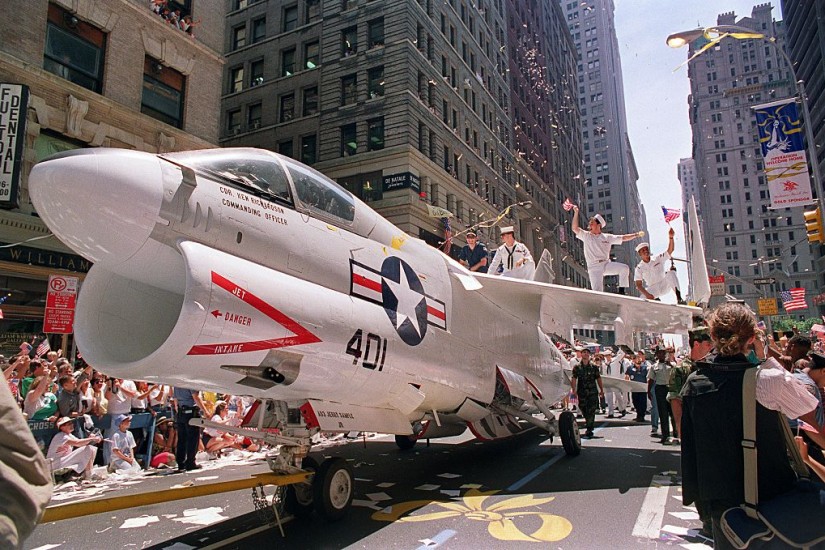The buildup to war with Iraq in 1991 saw a huge upsurge in support for the troops. Americans proudly displayed yellow ribbons everywhere from their front yards to their lapels. They sent thousands of care packages and letters to soldiers stationed in the Persian Gulf. And the entertainment industry also pitched in — from the Voices That Care supergroup that cut a single aimed at boosting troop morale to Whitney Houston’s flag-studded performance of the national anthem at the 1991 Super Bowl.
This wave of patriotism was grounded in the notion that, regardless of the politics of the war, U.S. soldiers must be supported loudly and publicly. Most important: The experience of the Vietnam veterans, who had faced scorn on their return from war, was not to be repeated.
Given this atmosphere, it is no surprise that even before the war ended, White House Chief of Staff John Sununu had a draft schedule of homecoming events on his desk, having received ideas on managing the celebrations from a Washington public relations firm Feb. 22, two days before the ground campaign in Kuwait even started.
In the aftermath of victory, President George H.W. Bush’s White House was inundated with advice from political operatives and supporters on how to make maximum political use of the impending victory celebrations, which could, in the words of one adviser, “lay extremely solid foundations for 1992.” Other politicians saw the victory as a way to unite the nation politically behind the president: House Minority Whip Newt Gingrich urged Bush to use the volunteer ethos of the military to advance conservative policy ideas by urging Americans to “join with that volunteer Army of freedom” to “make the 21st century the next American century.”
Similarly, the public relations firm Hill and Knowlton, which had close ties to the Bush administration and the Kuwaiti government, suggested that Bush appoint Gen. Norman Schwarzkopf or Gen. Colin Powell to run “Operation Domestic Prosperity,” a 100-day push to make the United States a “home for heroes” by passing the administration’s domestic policy agenda. Other firms suggested having the Department of Defense handpick returning veterans to “maintain and expand in a meaningful way the national sense of pride, accomplishment and good feeling generated by Operation Desert Storm.” These volunteers would be carefully selected and receive media training before being sent out to various media markets to promote the administration’s agenda.
